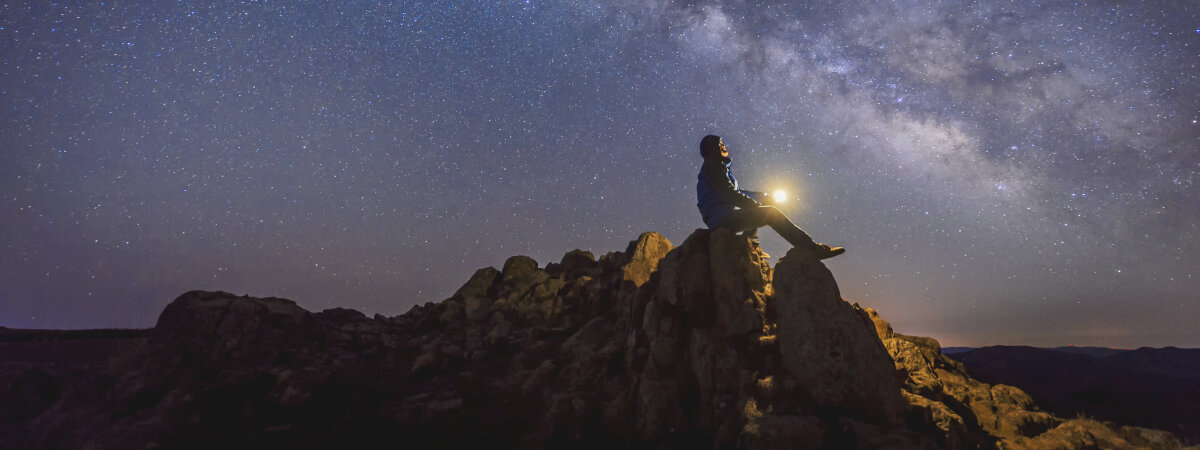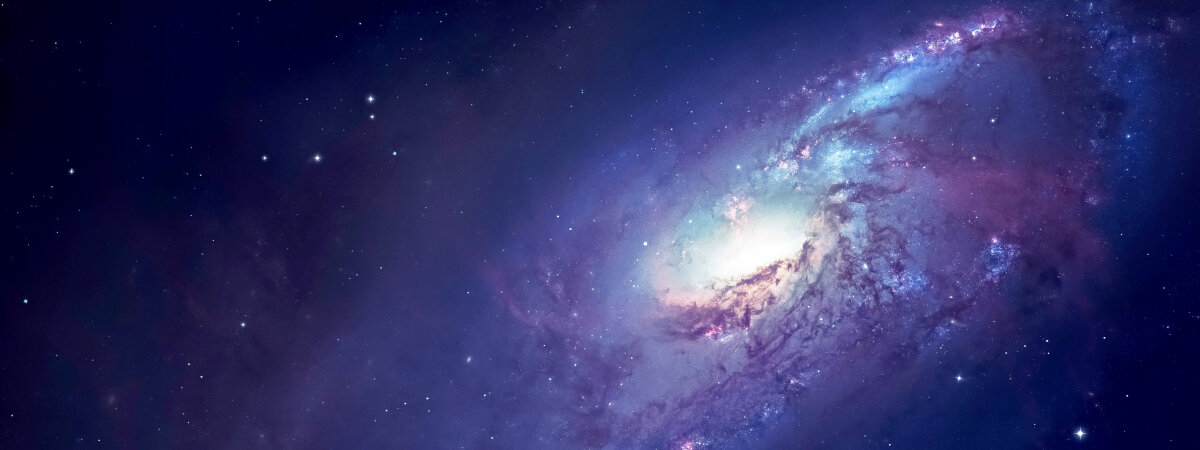Your Mysterious Awesome Universe
You live in a universe of marvel and wonder. Through the lens of a telescope, you peer out into the glittering expanse, finding new wonders that human beings cannot explain and can barely comprehend.
Scientists estimate that 275 million stars are born and die every day in the observable universe. It is a place of change and discovery. But God knows every one of the estimated 70 billion trillion stars by name (Psalm 147:4). Would you like to get to know some of them too?
FIRST LEG
Burning Ice World
The first stop on your voyage through the stars is Gliese 436 B, only 30 light-years from Earth. Astronomers believe this Neptune-size planet is composed of exotic water. Because “Gli” orbits 13 times closer to its star than Earth does to our sun, the surface is a balmy 572 degrees Fahrenheit. But the planet’s immensely pressurized core prevents the ice from melting. Just as coal under pressure creates diamonds, water under pressure can create “hot ice” with names like Ice vii and Ice x.
Galactic Diamond
Speaking of diamonds, as you travel 50 light-years from Earth, you reach BPM 37093, a dwarf star. Welcome to the biggest diamond in the universe. Nicknamed “Lucy” after a pop song, this white dwarf has some serious sparkle. When small stars die, they often become white dwarfs, like Lucy. The intense pressure on the carbon center of these dying stars forms diamond. Lots of diamond. Lucy weighs 2.27 thousand trillion tons. That is an estimated 10 billion trillion trillion carats. That’s a whole lot bigger than the largest diamond found on Earth, the Star of Africa, which weighs a mere 530 carats.
If you want a diamond closer in size to Lucy, hang around. Our sun is projected to die in 5 billion years. Two billion years after that, the ember core would crystallize, leaving this solar system with a giant diamond of its own.
Homeless Planet
At 100 light-years from Earth, you meet the neighborhood hermit. CFBDSIR J214947.2-040308.9 could sure do with some company. Let’s call him cfb. Poor cfb is alone. He has no star to orbit. Instead, cfb drifts quietly through space. Too small to be a star and too big to be a planet, cfb falls into the category of a brown dwarf. What makes cfb unique, though, is that of the hundreds of millions of celestial bodies, cfb is the only homeless guy in our neighborhood. All other planets and dwarfs have stars to orbit.
But cheer up, cfb. The word planet comes from the Greek words planeta or planêtês, meaning “wandering celestial bodies.” So maybe cfb is more of a planet than any!
Pulsars and Neutron Stars
As you cross an expanse of 770 light-years, you come closer and closer to a flashing light. But as you approach psr J0108-1431, you see that it emits a shining beam of light like a lighthouse. As it spins, that beam points toward Earth, giving the illusion of a flashing light. This is called a pulsar. When a star dies and collapses on itself, it becomes a neutron star. If it spins, it becomes known as a pulsar. A neutron star is normally 12 to 15 miles in diameter. But it packs a punch: It can contain up to twice the mass of our sun. A sugar cube-size piece of neutron star would weigh about a billion tons: Mount Everest in the palm of your hand! These stars also have incredible pull. Their gravitational pull ranges from 100 million to 1 quadrillion (a million billion) times that of Earth.
J0108 is one of 2,000 known pulsars in the universe. There are likely many more, but they don’t point their beam at us to let us know. J0108 is old—the oldest pulsar we have found. In its old age, it doesn’t spin as fast as other pulsars. The fastest pulsar in the universe rotates at 716 times per second—at an estimated 1 million miles per hour. Scientists believe pulsars must steal energy from nearby stars to go that fast.
But don’t get delayed by J0108’s magnetic personality. There is much more to see.

SECOND LEG
Boomerang Nebula
Deep space is cold at –455 degrees Fahrenheit! But after 5,000 light-years of travel, you reach the coldest place in the cosmos: the Boomerang Nebula. It is –458 degrees Fahrenheit, or 1 degree Kelvin. The nebula is a long way from anything. Its only warmth comes from background radiation leftover from the creation of the universe.
This brisk nebula is also the result of a dying star. Many of the wonders we are visiting are the bizarre results of a universe in decay. More on this later.
The Elderly Star
You wouldn’t think it, but the oldest living star in our universe is just up the road. At 6,000 light-years from Earth, you come to SM0313. “Smo” was born 13.6 billion years ago—just a few hundred years after the estimated creation of the universe. “Smo” has almost no heavy elements, thus helping scientists determine its age. But this leaves experts with a question: How did it get there? How did the oldest star in the universe arrive on our back porch? One of the literal mysteries of the universe.
Looking Out to See the Past
We are now 6,000 light-years from Earth. Try waving to your friends and family on Earth. They won’t see your gesture for another 6,000 years! Yes, it takes 6,000 years for light from Smo to reach our home. That means when you see Smo through a telescope, you are seeing the universe from 6,000 years ago: the time when God created mankind on Earth!
To look into outer space is to look back in time. As you peer deeper into space from Earth, you begin to see things as they were billions of years ago. Many of the wonders we are describing on this voyage actually may not even be there any longer! They could be dust; they could be burned out, crystallized or swallowed up in a black hole! We don’t know because the light—the image—of whatever has happened is still traveling toward us.
The size, scope and age of our universe is simply more than we can wrap our minds around. It is no surprise that God implied in Jeremiah 31:37 that the universe cannot be measured.
A Cloud of Alcohol
Don’t get too excited. This isn’t some galactic libation. It is methyl alcohol, not the ethanol in your evening glass of shiraz. That said, it is something to behold.
This cloud of alcohol drifting through space is 288 billion miles long.
Looking back, you are now 10,000 light-years from Earth.
One Ginormous Planet
Sitting 22,000 light-years from Earth is Ogle-2016-blg-1190Lb. Ogle makes Jupiter look like Pluto. The planet is 13.4 times the mass of scrawny Jupiter. Ogle is the largest planet ever discovered. Any larger and it would be classed as a brown dwarf like our homeless friend cfb.
Ogle mingles in the center of the Milky Way. Beside it sits the brown dwarf desert—a place devoid of brown dwarfs. This is partially why scientists believe Ogle could be a planet, not a dwarf. Either way, it’s definitely worth a visit on our galactic getaway.
But don’t think this is a great piece of future real estate. The gravitational pull would crush you if you tried to move there. God fashioned our Earth and allows it to spin just fast enough to make life possible—without drifting away or being squashed. God told Job about the time when He marked up the dimensions of our planet! (Job 38:5).
Mysterious Galaxy X
Jump out of your galaxy to a place 300,000 light-years away from Earth. Meet Galaxy X. This galaxy is chiefly composed of dark matter—the mysterious substance that neither emits nor reflects light. The existence of this is revealed by a cluster of just four young pulsating stars on the edge of our Milky Way. Galaxy X is small. So small, in fact, that it actually orbits the Milky Way.
Scientists believe many such dark-matter galaxies orbit around larger galaxies in the universe.

THIRD LEG
The Indestructible Star
Traveling 500 million light-years from Earth, you come across a survivor. When a star goes supernova, it is usually considered fatal. A supernova is a star exploding in an incredible ball of light that can last for months. When scientists saw iPTF14hls pop, they figured that would be the last they saw of the little sun. But two years later, iPTF is still going. It flared five times over the 24-month period. Looking back in the records, astronomers found an explosion of the star was recorded in 1954.
Checking in on this unstoppable star ought to remind us how little we know of our universe. Of the trillions of stars, this one is the only star that has survived at least two supernovae. How many more fascinating, unique planets and stars are out there beyond our gaze?
Let’s keep looking.
A Whole Lot of Nothing
Three billion light-years from Earth, you stand on the brink of the largest structure ever discovered. It is called the Supervoid. This expanse is 1.8 billion light-years across and is missing some 10,000 galaxies. Again, scientists are left scratching their heads. It doesn’t fit into predicted models of the universe. They claim it is simply too big to exist!
Sunny Side of the Universe
Next you can work on your tan by heading 7 billion light-years from Earth to the El Gordo Galaxy Cluster, the largest galaxy in the known universe. “El Gordo” is Spanish for “the fat one.” Its mass is 3 quadrillion suns—so huge, scientists believe, because it collided with another galaxy.
Despite its size, El Gordo represents less than 1 millionth of a percent of all stars in the universe! And even that is likely a gross overestimation.
The Chief of All Black Holes
You are now 12.8 billion light-years from Earth. Here you find J0100+2802, a black hole 12 billion times the size of the sun. As it sucks in surrounding debris, it heats the material up. This creates a quasar that beams light from across the early universe to us here on Earth.
Aside from gamma-ray bursts, quasars are the brightest things in the universe. Some emit more light than 100 galaxies! As impressive as that is, God promises in Daniel 12:1-3 that the resurrected saints in the Millennium will shine “as the brightness of the firmament; and they that turn many to righteousness as the stars for ever and ever.”
You are almost out of time on this voyage—literally. You are near the edge of known space and time! There is one place left to visit, located 13.3 billion light-years from Earth.
A Long Way From Home
At the edge of the great beyond we meet Galaxy MACS0647-JD. According to current data, “Mac” is the furthest galaxy from us in the observable universe.
Mac is probably older than our Milky Way. As we see him through the Hubble telescope, he looks small and young, but remember: This is how he looked 13.3 billion years ago.
Scientists believe Mac has existed for 97 percent of the history of space and time as we know it.
Sitting here on the edge of the universe, who knows what Mac can see. Astronomers are always finding galaxies further away. They are constantly challenging our perception of when time began.

The Most Amazing Place in the Universe
You have seen some bizarre, some jaw-dropping and some breathtaking wonders on your little galactic tour. But there is one place that stands out more than the others. One place that is truly worth seeing. Look out your window.
Welcome back to Earth. It sits far from black holes and quasars. It is nowhere near exploding supernovae or clouds of alcohol. It isn’t big. It doesn’t explode, consume, radiate or wander. Yet there is no place like Earth—your home. And the universe knows it.
Restoration
Did you know that El Gordo, Mac, Lucy, Galaxy X and every star, planet, dwarf and comet in the universe is watching Earth, and waiting for you? Read Romans 8:19-23. The creation—all of it—waits in eager longing for the sons of God. So many of the sites on your voyage were in decay or dead: exploding stars, colliding galaxies, drifting planets, consuming black holes. But Romans 8:21 says you can deliver the universe from this bondage. Verse 22 says the creation is in pain, waiting to be saved, and its Creator wants you to be one of those to do it.
Isaiah 51:16 says that human beings will plant the heavens! The universe was not made to stay desolate. God created it to be inhabited! This is why Earth is so important. It is the staging ground for universal and eternal expansion! It is the base camp for the greatest expansion ever! And your potential is bound up in that plan.
We at the Trumpet often write on the subject of man’s potential as outlined in the Holy Bible. Herbert W. Armstrong’s book The Incredible Human Potential explains this in vivid detail. If you look at the universe and wonder about your place in it, then you need this book! And if you enjoyed this tour, request and read Our Awesome Universe Potential. This free booklet is an even grander universe tour. It explains in greater depth the marvelous universe around you—and our role in it.
Out there is a universe created with purpose—a universe of wonders and mysteries. And it is a universe waiting for you.
